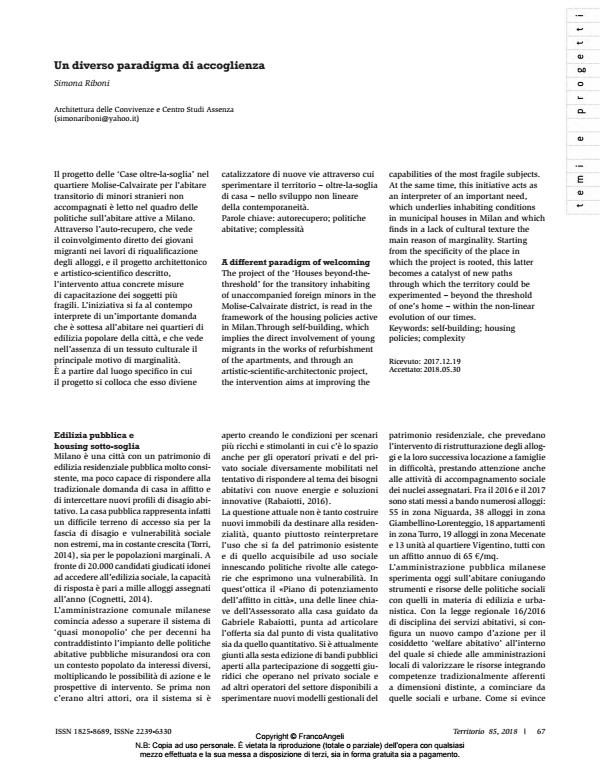A different paradigm of welcoming
Journal title TERRITORIO
Author/s Simona Riboni
Publishing Year 2018 Issue 2018/85
Language Italian Pages 7 P. 67-73 File size 753 KB
DOI 10.3280/TR2018-085008
DOI is like a bar code for intellectual property: to have more infomation
click here
Below, you can see the article first page
If you want to buy this article in PDF format, you can do it, following the instructions to buy download credits

FrancoAngeli is member of Publishers International Linking Association, Inc (PILA), a not-for-profit association which run the CrossRef service enabling links to and from online scholarly content.
The project of the ‘Houses beyond-thethreshold’ for the transitory inhabiting of unaccompanied foreign minors in the Molise-Calvairate district, is read in the framework of the housing policies active in Milan.Through self-building, which implies the direct involvement of young migrants in the works of refurbishment of the apartments, and through an artistic-scientific-architectonic project, the intervention aims at improving the capabilities of the most fragile subjects. At the same time, this initiative acts as an interpreter of an important need, which underlies inhabiting conditions in municipal houses in Milan and which finds in a lack of cultural texture the main reason of marginality. Starting from the specificity of the place in which the project is rooted, this latter becomes a catalyst of new paths through which the territory could be experimented - beyond the threshold of one’s home - within the non-linear evolution of our times.
Keywords: Self-building; housing policies; complexity
Simona Riboni, Un diverso paradigma di accoglienza in "TERRITORIO" 85/2018, pp 67-73, DOI: 10.3280/TR2018-085008